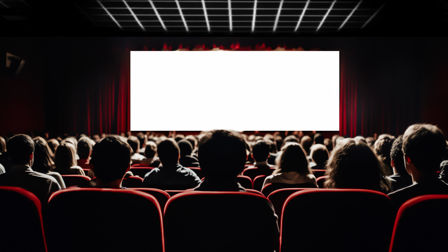Animation in 2020: Survivor's guilt and golden ages
Christopher O'Reilly, Co-Founder and ECD at Nexus Studios, looks back at the road travelled in 2020 when, in a year unlike any other, animation was sometimes the only option. He also casts an eye over the road ahead, and hopes we've turned a corner on an extraordinary year.
Let’s start with a bright, bold thought in what has been a gloomy year: Animation is entering a golden age.
This may even be one of the most prolific and diverse eras for the craft of all time, and while little of that has to do with the circumstances of the pandemic, the animation industry will no doubt reflect on 2020 with a degree of survivor’s guilt.
The animation industry will no doubt reflect on 2020 with a degree of survivor’s guilt.
For a few moments through the year animation was the only option on the filmmaking table. Animation studios responded by mobilising their teams remotely and continued to be productive through the extraordinary months of lockdown. It was no easy task to shift their large crews from dedicated, on-site facilities, to work from home. But thanks to the Herculean wrangling of IT staff and pipeline crew - the unsung heroes - many studios continued to make films. I have immense pride in how our team came together in extraordinary circumstances to get high quality work out in those unfamiliar conditions.
Credits
powered by
- Agency Johannes Leonardo/New York
- Production Company Nexus Studios/USA
- Director Fx Goby
-
-
Unlock full credits and more with a Source + shots membership.
Credits
powered by
- Agency Johannes Leonardo/New York
- Production Company Nexus Studios/USA
- Director Fx Goby
- Chief Creative Officer Jan Jacobs
- Chief Creative Officer Leo Premutico
- Design Director Charles Watlington
- Executive Creative Director Jimm Lasser
- Group Executive Producer Benton Roman
- HP Maria Perez
- Executive Producer Juliet Tierney
- Art Director Manshen Lo
- Animation Supervisor Michal Firkowski
- Music Human Music & Sound Design/USA
- Creative Director Justin Hori
- Creative Director Andy Bloch
- Executive Producer James Dean Wells
- Sound Design/Audio Post Sonic Union
- Sound Design Steve Rosen
- Producer Patrick Sullivan / (Producer)
- Director of Studio Operations Justine Cortale
- Music Supervision Groove Guild
- Music Supervisor Al Risi
- Executive Creative Director Chris O'Reilly
- Executive Producer Cindy Burnay
- Creative Director/Art Director Laura Longstaff
- Executive Producer Rebecca O'Neill

Credits
powered by
- Agency Johannes Leonardo/New York
- Production Company Nexus Studios/USA
- Director Fx Goby
- Chief Creative Officer Jan Jacobs
- Chief Creative Officer Leo Premutico
- Design Director Charles Watlington
- Executive Creative Director Jimm Lasser
- Group Executive Producer Benton Roman
- HP Maria Perez
- Executive Producer Juliet Tierney
- Art Director Manshen Lo
- Animation Supervisor Michal Firkowski
- Music Human Music & Sound Design/USA
- Creative Director Justin Hori
- Creative Director Andy Bloch
- Executive Producer James Dean Wells
- Sound Design/Audio Post Sonic Union
- Sound Design Steve Rosen
- Producer Patrick Sullivan / (Producer)
- Director of Studio Operations Justine Cortale
- Music Supervision Groove Guild
- Music Supervisor Al Risi
- Executive Creative Director Chris O'Reilly
- Executive Producer Cindy Burnay
- Creative Director/Art Director Laura Longstaff
- Executive Producer Rebecca O'Neill
Above: Nexus's work for VW from January.
In branded content, we saw a flurry of work. Some campaigns were originally intended for live-action, others ultra-fast turn around as clients responded in real time to the crisis. It’s fair to say that many of our clients were faced with making animation for the first time in their careers, and it was encouraging to see how this was positively embraced as the year developed. I think the industry made new friends.
From the narrow perspective of work alone, the animation industry was exceedingly fortunate, it's hard to feel in a celebratory mood.
We are all more than just our work of course, and, in that respect, everyone felt the blow of Covid to our lives. We missed the fun of being together. Some had true blows to their families' health, or their own. Others to the stress of isolation. So, although from the narrow perspective of work alone, the animation industry was exceedingly fortunate, it's hard to feel in a celebratory mood.
The year also gave the animation industry other reasons for reflection and sadness. There was the tragic loss of Kobe Bryant; a welcome member of the industry not just through his Oscar-winning filmmaking collaboration with Glen Keane, but also his intentions at Granity Studios, where he planned to launch a fully-fledged animation studio. And, alongside the creative community as a whole, the animation industry took time to look in the mirror after the killing of George Floyd and was reminded that it had not done enough to reflect the diversity it should. It felt like, for the most part, the industry listened and learned, but how we materially change is a work in progress. The vigilance continues and the reward is not just fairness but better, more creative, less predictable storytelling.
Above: Series such as Undone and I Lost My Body have reinvigorated animation.
Which brings me to the things for which we have reason for optimism. This year saw animation breaking out to new audiences. At scale, the medium has long been the preserve of three main areas; kids TV, animated family features and adult comedy. We can name some notable exceptions, but they were always that, exceptions. The streaming services of Netflix, Disney+, Amazon, HBO Max and others have changed the economy of animation and how stories find an audience. And with that, animation is venturing into new genres and telling the types of stories that we always knew it could when given the chance.
Animation is venturing into new genres and telling the types of stories that we always knew it could when given the chance.
The results of this are not yet on our screens at scale, but they're coming one painstaking frame at a time. Our show The House, for Netflix [released late 2021], is an example: A three-part animated special directed by three leading voices of stop-frame animation, Marc Roels and Emma De Swaef, Niki Lindroth Von Bahr and Paloma Baeza. This is a dark, animated comedy with three distinct, independent voices at the helm. Amazon’s rotoscope drama Undone, Netflix’s fantasy drama feature I Lost My Body, the bittersweet, childlike world but adult themes of Rillakuma and Kaoru, and the dark sci-fi of Love, Death & Robots show the growing creative range of animated storytelling supported by the streamers. Animation is finally being allowed to spread its wings, and this year has been a launching pad for some of the most diverse and creative work in our industry for decades.
Credits
powered by
- Agency VMLY&R/London
- Production Company Nexus Studios/UK
- Director Smith & Foulkes
-
-
Unlock full credits and more with a Source + shots membership.
Credits
powered by
- Agency VMLY&R/London
- Production Company Nexus Studios/UK
- Director Smith & Foulkes
- Sound Design Factory
- Music Siren/London
- Chief Creative Officer Laurent Simon
- Creative Chairman Mark Roalfe
- Creative Director Gavin McGrath
- Art Director Perle Arteta
- Designer Chris Willis / (Designer)
- Producer Tanya Fitzgerald
- Exec Creative Director Chris O'Reilly (Nexus Studios)
- Producer Tracey Cooper
- Producer Rebecca Archer
- Art Director Callum Strachan
- Animator Bishoy Gendi

Credits
powered by
- Agency VMLY&R/London
- Production Company Nexus Studios/UK
- Director Smith & Foulkes
- Sound Design Factory
- Music Siren/London
- Chief Creative Officer Laurent Simon
- Creative Chairman Mark Roalfe
- Creative Director Gavin McGrath
- Art Director Perle Arteta
- Designer Chris Willis / (Designer)
- Producer Tanya Fitzgerald
- Exec Creative Director Chris O'Reilly (Nexus Studios)
- Producer Tracey Cooper
- Producer Rebecca Archer
- Art Director Callum Strachan
- Animator Bishoy Gendi
Above: Department of Transport, Train, directed by Smith & Foulkes.
We also saw the beginning of significant changes in how we actually make animation. On the one hand, traditional animation crafts like stop-frame and 2D still thrive, but the time intensive, linear nature of animation has always been a daunting fact of life. Bringing game engines into the pipeline opens the possibility of new, more agile processes which will shift animation as a viable creative solution.
In 2020, supported by Unreal, we have been making an animated trailer to a series with Oscar-winning director Patrick Osborne. The entire project is made in their game engine. Think of its benefits as a live set where you can move cameras and lights around an animated performance. Not only does real-time make production more agile, it will also create opportunities for new types of animated content, such as shows that are more live or topical.
It felt like this year was the moment [realtime] technology went from being a possibility to an exciting reality.
This could radically shift how advertisers use animation also. Realtime will allow branded content to become more conversational, nuanced and reflective of its audience, as opposed to being fixed, interruptive and declamatory. Think of this as content by storytellers who listen as well as talk. It felt like this year was the moment this technology went from being a possibility to an exciting reality, and the biggest shift in how we make films since digital filmmaking began.
New ways to make animation, broader audiences, unexpected stories told by more diverse voices - these are things that animation can be hopeful for as we turn the corner on an extraordinary year.
)















